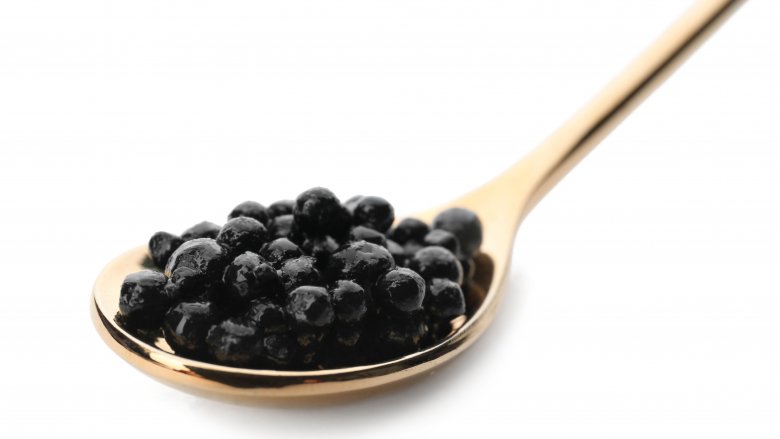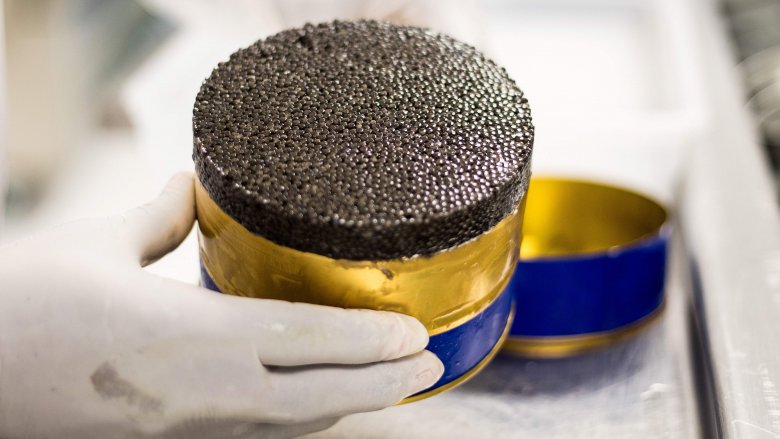Why Is Caviar So Expensive?
Caviar is practically synonymous with fabulous wealth and extravagance. It features prominently in parties thrown by Russian oil barons, has made an appearance on a $1,000 pizza, and was even used to moisturize the skin of first son Barron Trump. Yes, caviar is definitely some high-end stuff — but why? What elevates humble fish eggs to such an exalted status?
Well, for starters, they're not just any fish eggs. All fish eggs are known as roe, but only the eggs of the sturgeon are given the designation of caviar. What's more, there are only 27 varieties of sturgeon, and 18 of these are on a list of threatened species, making sturgeon the planet's most endangered group of species. And the rarer sturgeon and its eggs become, the more we value them, since scarcity seems to feed demand (just like with Popeyes and its sold-out chicken sandwiches).
Yet another factor that increases the cost of caviar is the fact that these fish eggs must be harvested by hand, and any process that can't be automated incurs higher labor costs. And let's not forget the "snob appeal" — caviar has long been marketed as a food fit for the aristocracy, so naturally it's got to have a price tag that goes along with its image.
High-end caviar is becoming less expensive
While top dollar caviar still costs pretty big bucks, importer Caviar Star tells us that price is related to both availability of a particular variety and the labor required to produce it. Oh yeah, and also the time it takes the fishies to produce those eggs. Cheaper caviar comes from sturgeon that can produce a lot of eggs in a fairly short period of time, but eggs from rare, slow-producing sturgeon come with a much higher price tag.
Once upon a time, the best caviar was wild-caught, but over-fishing led to endangerment led to government regulation led to... there's now hardly any wild-caught sturgeon caviar to be had anywhere on the planet for love or money. This means that almost every single sturgeon egg on the market these days comes from a fish farm. While some sturgeon are still rarer than others, and their eggs thus pricier, the increased economy and efficiency of aquaculture has led to a decrease in prices across the board.
What's more, while all caviar comes from sturgeon, it ain't all Beluga. Caviar made from your humbler, less-endangered domestic-variety sturgeon does tend to be cheaper, and even caviar-obsessed chef Guy Meikle of Chicago's Heritage Restaurant admits (via GQ) that you can buy some pretty palatable caviar for just $10 a jar — in fact, he highly recommends you purchase the less pricy varieties in greater quantities, rather than blowing your entire budget on just a smidgen of the most expensive caviar.
But what if you're a multi-billionaire and you're just dying to show off? How can you make sure your caviar still screams "insane excess!" when it's made with factory-farmed fish eggs? Simple — just sprinkle it with 22 karat gold, like Strottarga Bianco caviar. At $113,600 per kilo, it's sure to win you the all-time over-the-top pampered palate award, fins down.

